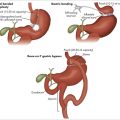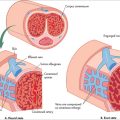chapter 13 Screening and prevention
INTRODUCTION AND OVERVIEW
Preventive and screening activities require informed, disciplined and motivated patients as well as doctors. It also requires the support of reliable systems for recording data and sending reminders. Respective colleges in Australia through the RACGP,1 and in the United Kingdom, United States and many other countries, along with the World Health Organization,2 have actively reviewed evidence and made recommendations for best practice in screening and preventive activities. This chapter attempts to distill some of the key points raised by these recommendations.
PREVENTION
There are three main levels of prevention.
PATIENT EDUCATION
Helping patients to make healthy change in their lives is one aspect of clinical medicine that requires as much art as science. Factors that enhance this process include:3
ISSUES IN PREVENTION AND SCREENING
This section comments on some specific issues in relation to particular conditions or patient groups. Other chapters also have content on this topic—see, for example, the chapters on sexual health (Ch 61), cardiovascular disease (Ch 25), diabetes (Ch 26), cancer (Ch 24) and psychiatry and psychology (Ch 40).
PREGNANCY
CHILDREN
MIDDLE AGE AND OLD AGE
The preventive and screening issues for these age groups are well covered in the RACGP lifecycle chart for adults (see Resources list). The aim should be to add not just years to life, but also quality to those years. In order for people to take the time to engage in preventive activities during young adulthood and middle age—which is often the busiest time in a person’s life because of work and family commitments—it is important for regular encouragement and reminders to be given, particularly for men, who are far more likely to avoid self-care and health maintenance. Particular issues for men and women are covered in the chapters on men’s health (chs 48–50 ch 49 ch 50), and women’s health (chs 51–53 ch 52 ch 53).
CHRONIC DISEASE PREVENTION AND SELF-MANAGEMENT
The SNAP (smoking, nutrition, alcohol and physical activity) guidelines4 are a good starting point for the prevention and management of chronic illnesses. In this book, the ESSENCE Model (education, stress management, spirituality, exercise, nutrition, connectedness, environment) has been used and is more comprehensive because it includes environment, and psychological and social factors.5
The ‘5A’s approach’6 has been used in order to help streamline and systematise the assessment of various risk and protective factors.
American Academy of Family Physicians, guidelines on prevention. http://www.aafp.org/online/en/home/clinical/exam.html.
Royal Australia College of General Practitioners (RACGP, Melbourne), guidelines for preventive activities in general practice. http://www.racgp.org.au/guidelines/redbook.
UK National Health Services, UK National Screening Committee. http://www.nsc.nhs.uk/index.htm.
World Health Organization. Screening for various cancers. http://www.who.int/cancer/detection/variouscancer/en/.
1 Royal Australian College of General Practitioners. Guidelines for preventive activities in general practice. Melbourne: RACGP; 2009. Online. Available: http://www.racgp.org.au/guidelines/redbook.
2 World Health Organization. Screening for various cancers. Geneva: WHO; 2005. Online. Available: http://www.who.int/cancer/detection/variouscancer/en/.
3 Mullen P, Simons-Morton DG, Ramirez G, et al. A meta-analysis of trials evaluating patient education and counselling for three groups of preventive health behaviours. Patient Educ Couns. 1997;32(3):159-173.
4 Royal Australian College of General Practitioners. Smoking, nutrition, alcohol and physical activity: a population health guide to behavioural risk factors for general practices. Melbourne: RACGP, 2004.
5 Hassed C. The Essence of health: the seven pillars of wellbeing. Sydney: Random House, 2008.
6 Cited in the RACGP ‘Red book’ (see reference 1): Dolan M, Mullen P, Simons-Morton DG et al. A meta-analysis of trials evaluating patient education and counselling for three groups of preventive health behaviours. Cochrane Database Syst Rev 1997.





